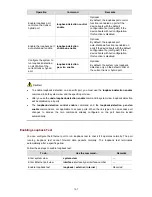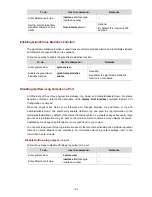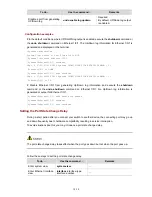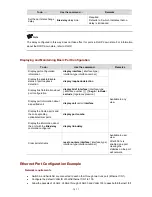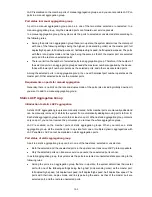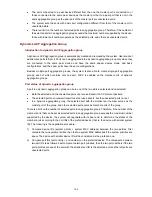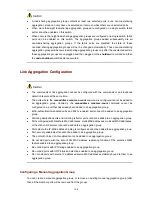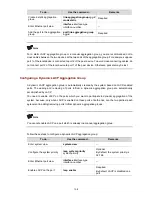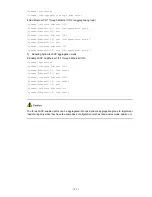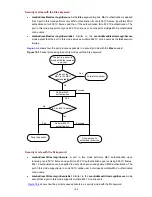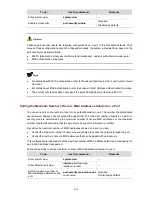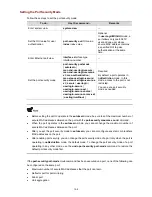
To do…
Use the command…
Remarks
Create a static aggregation
group
link-aggregation group
agg-id
mode
static
Required
Enter Ethernet port view
interface interface-type
interface-number
—
Add the port to the aggregation
group
port link-aggregation group
agg-id
Required
For a static LACP aggregation group or a manual aggregation group, you are recommended not to
cross cables between the two devices at the two ends of the aggregation group. For example, suppose
port 1 of the local device is connected to port 2 of the peer device. To avoid cross-connecting cables, do
not connect port 2 of the local device to port 1 of the peer device. Otherwise, packets may be lost.
Configuring a Dynamic LACP Aggregation Group
A dynamic LACP aggregation group is automatically created by the system based on LACP-enabled
ports. The adding and removing of ports to/from a dynamic aggregation group are automatically
accomplished by LACP.
You need to enable LACP on the ports which you want to participate in dynamic aggregation of the
system, because, only when LACP is enabled on those ports at both ends, can the two parties reach
agreement in adding/removing ports to/from dynamic aggregation groups.
You cannot enable LACP on a port which is already in a manual aggregation group.
Follow these steps to configure a dynamic LACP aggregation group:
To do…
Use the command…
Remarks
Enter system view
system-view
—
Configure the system priority
lacp
system
-
priority
system-priority
Optional
By default, the system priority is
32,768.
Enter Ethernet port view
interface interface-type
interface-number
—
Enable LACP on the port
lacp enable
Required
By default, LACP is disabled on a
port.
13-8


